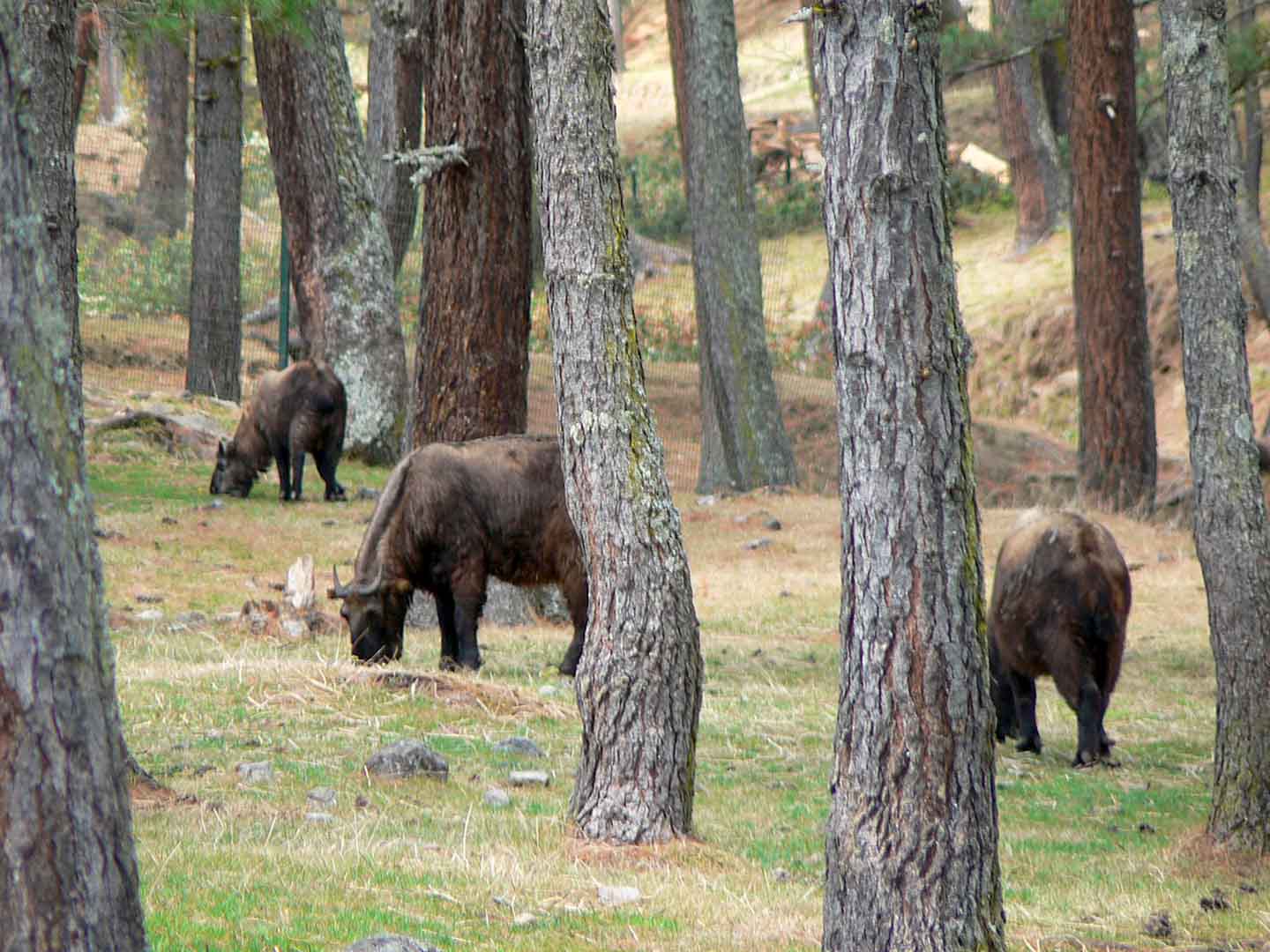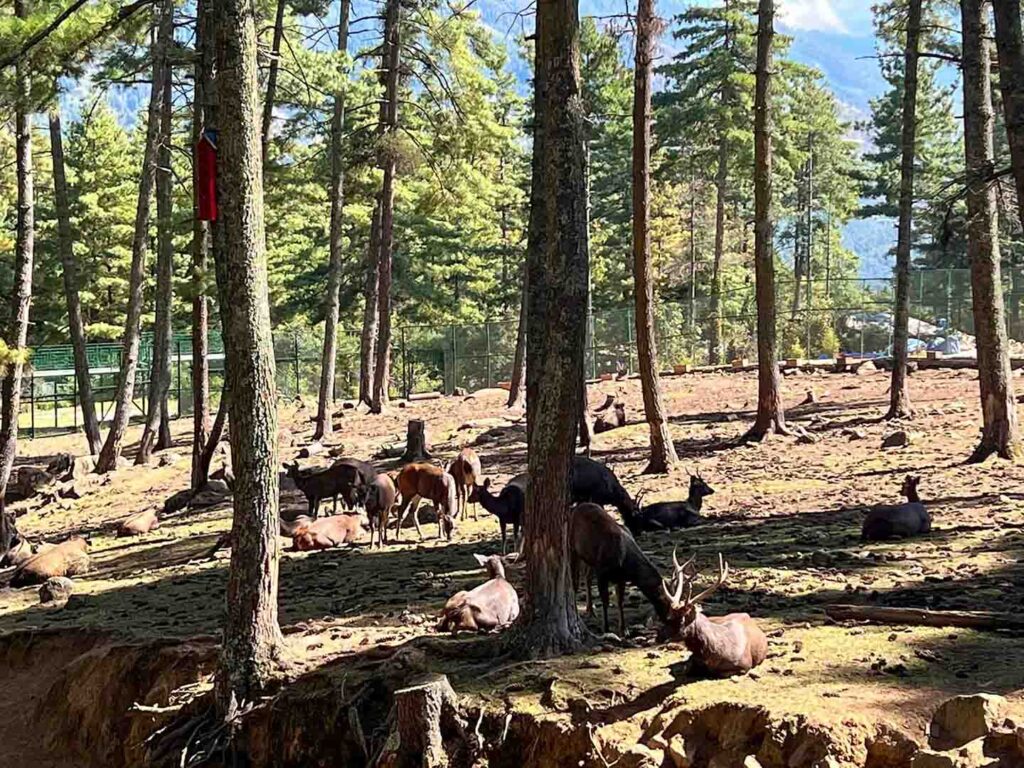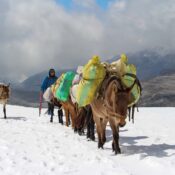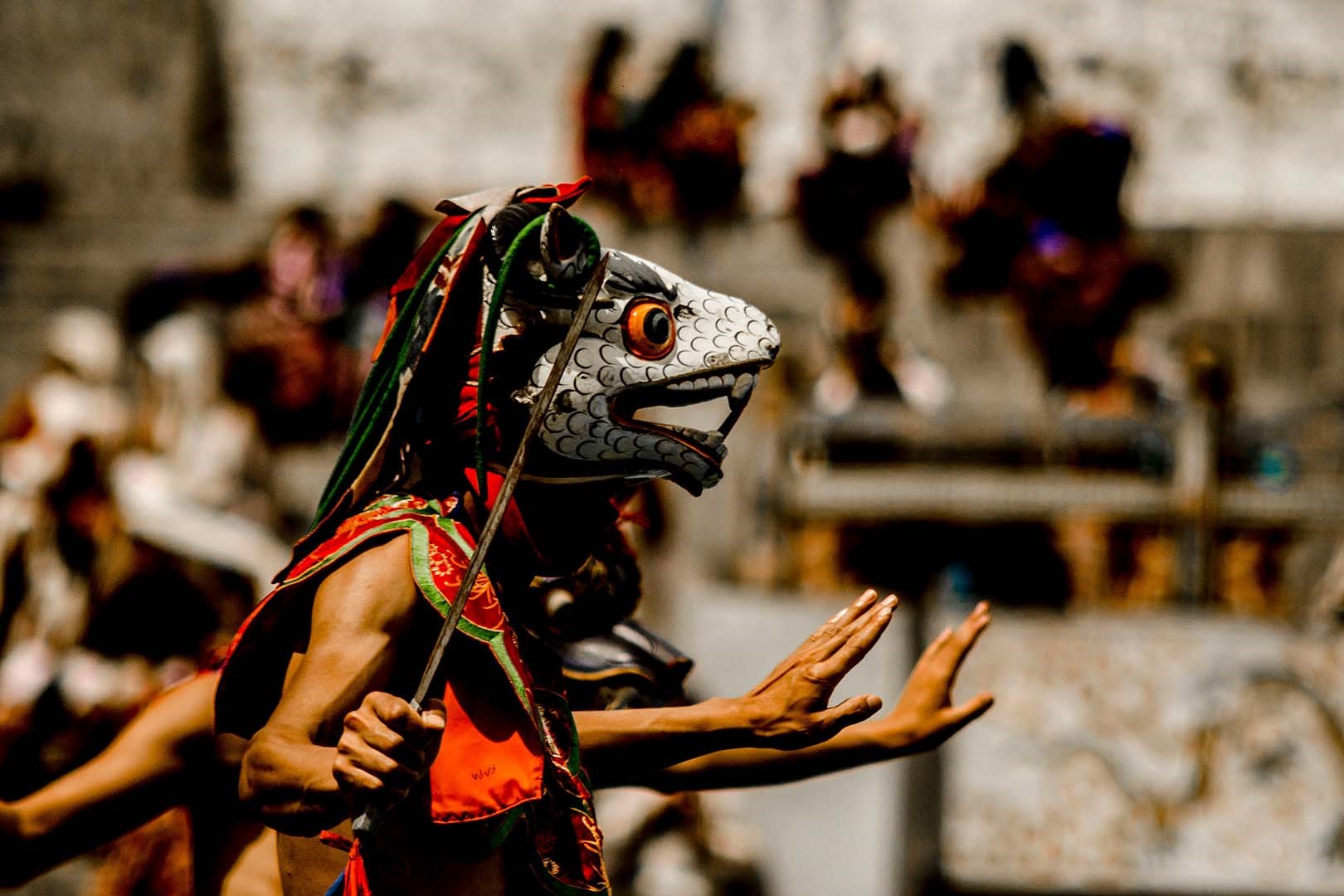Takin Preservation Center in Thimphu

Takin Preservation Center in Thimphu
Motithang Takin Preserve, located in the Motithang district of Thimphu, Bhutan is a wildlife reserve area for takin, the national animal of Bhutan. Originally a mini-zoo, it was converted into a preserve when it was discovered that the animals refrained from inhabiting the surrounding forest even when set free. The reason for declaring takin as a national animal of Bhutan on 25 November 2005 (Budorcas taxicolor) is attributed to a legend of the animal’s creation in Bhutan in the 15th century by Lama Drukpa Kunley
Legend of Takin Preservation Center in Thimphu
The local mythology related to declaring takin as the national animal of Bhutan is dated to the 15th century. A Tibetan saint by the name Drukpa Kunley, popularly called by the epithet “The Divine Madman” is credited with creating the tamin’ with unique features. Drukpa Kunley, who was not only a religious preacher but also a proficient tantric, was requested by the people of Bhutan during one of his religious lectures to conjure a miracle before them. The saint agreed to do so provided he was fed for lunch, a whole cow, and a whole goat. Once served, he devoured the food of both animals and left out the bones. He then took out the head of the goat fixed it to the skeleton of the cow and uttered abracadabra and the magic worked. With a snap, he created a live animal, which had the head of a goat and the body of a cow. The animal sprang up and moved on to the meadows to graze. The animal was then given the name dong gyem tsey (takin). Since then this animal has been a common sight in the hills of Bhutan. Because of this magical creation with a high religious connotation, the animal has been adopted as the national animal of Bhutan.
Habitat of Takin
Takin attracted attention due to their unusual appearance; taxonomists were originally uncertain of this animal’s phylogeny and many people describe it as a “bee-stung moose”. Bhutan takin (Budorcas taxicolor whitei) is listed as a vulnerable species of goat-antelope, native to Bhutan, India and the People’s Republic of China.
Its habitat is alpine meadows during the summer season, above an altitude of 3,700 metres (12,100 ft), where they feed primarily on grasses. During the summer monsoon season, the lower elevation forests are inhospitable for takin due to the abundance of leeches, mosquitoes, and horseflies. Alpine meadows provide rich grazing for takin and as a result, some males have been reported to weigh as much as a tonne. Courtship and mating occur in July and August. After a gestation period of about 8 months, a single calf is born, usually in late February or March. Adult takin has a golden yellow and brownish coat; calves are initially black. As the rainy season tapers, the animals move down to elevations of 2,000 metres (6,600 ft) and 3,000 metres (9,800 ft) to browse during the winter season on temperate vegetation of broad leaf forests.

Entrance Fees for Tourists
The entrance fee for tourists visiting the sights is Nu.300 per person.
Contact Person for Takin Preservation Center
Mobile number +975
Similar Attraction
- Memorial Chorten.
- Semtokha Dzong
- Folk Heritage Museam
- National Weaving Center in Tashigang
- Tango Monastery




